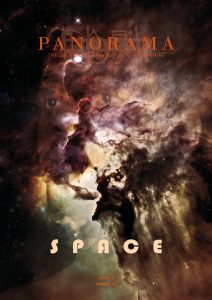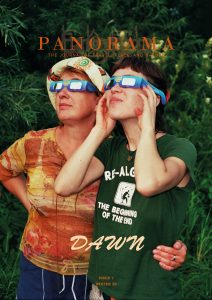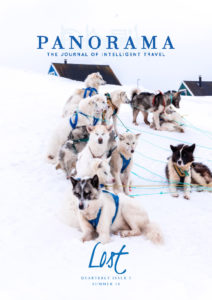Snakes could be anywhere, which means everywhere. We kid sandwich: parent leading, kid kid, parent trailing. It’s hard to watch where all the feet go, all the hands. Don’t grab the vines. Don’t grab the vines. What did I just say. The insanity of parenting: saying the same thing, expecting different results. A list of things that look like snakes in the jungle: all of it. There’s a group of 60 schoolkids from The International School. “They’re so lucky,” our daughter sighs, “coming here with their class.” We watch the students descend on the breakfast buffet, strip it clean. Are there piranhas in the river? I think that’s South America, but don’t let your hands fall over the boat’s edge. First snake spotted: arboreal, keeper of treetops. Paradise flying snake: say no more. When we walk by the cabins, the school group yells “Hey kids!” to our two in a jingle of accents. Dennis and I are poor substitutes for the company of children, but we’re great about picking up the tab. Boots rimed with red clay. Is that elephant or tapir poo? The disagreement is long and ends in mediation. In the welcome center of Taman Negara, a poster on “The Medically Important Poisonous Snakes of Malaysia,” which implies a larger group of snakes contributing nothing to medicine. By day 4, the kids are 20 yards ahead, waiting at junctions and steep downhills. I’m the only one who gives up ego for guide ropes, my daughter’s sweaty hand limping along in mine. When she slips, I say “I’ve got you,” but that’s not really true.
Share:
Download:




The Atlas of Reds and Blues
£8.99
This Washington Post Best Book of the Year grapples with the complexities of the second-generation American experience, what it means to be a woman of color in the workplace, and a sister, a wife, and a mother to daughters in today's America.
When a woman--known only as Mother--moves her family from Atlanta to its wealthy suburbs, she discovers that neither the times nor the people have changed since her childhood in a small Southern town. Despite the intervening decades, Mother is met with the same questions: Where are you from? No, where are you really from? The American-born daughter of Bengali immigrants, she finds that her answer―Here―is never enough.
Mother's simmering anger breaks through one morning, when, during a violent and unfounded police raid on her home, she finally refuses to be complacent. As she lies bleeding from a gunshot wound, her thoughts race from childhood games with her sister and visits to cousins in India, to her time in the newsroom before having her three daughters, to the early days of her relationship with a husband who now spends more time flying business class than at home.
Drawing inspiration from the author's own terrifying experience of a raid on her home, Devi S. Laskar's debut novel explores, in exquisite, lyrical prose, an alternate reality that might have been.
The entire novel takes place over the course of a single morning. . . and the effect is devastatingly potent. --Marie Claire
Devi S. Laskar's The Atlas of Reds and Blues is as narratively beautiful as it is brutal . . . I've never read a novel that does nearly as much in so few pages. --Kiese Laymon, author of Heavy
Category: Books
Circa
£20.00
For fans of The Burning Girl by Claire Messud and Burnt Sugar by Avni Doshi, a stunning, gut-punch of a novel that follows a young Indian American woman who, in the wake of tragedy, must navigate her family's expectations as she grapples with a complicated love and loss.
On the cusp of her eighteenth birthday, Heera and her best friends, siblings Marie and Marco, tease the fun out of life in Raleigh, North Carolina, with acts of rebellion and delinquency. They paint the town's water towers with red anarchy symbols and hang out at the local bus station to pickpocket money for their Great Escape to New York. But no matter how much Heera defies her strict upbringing, she's always avoided any real danger--until one devastating night changes everything.
In its wake, Marco reinvents himself as Crash and spends his days womanizing and burning through a string of jobs. Meanwhile, Heera's dream to go to college in New York is suddenly upended. Over the years, Heera's and Crash's paths cross and recross on a journey of dreams, desires, jealousies, and betrayals.
Heart-wrenching, darkly funny, and buoyed by gorgeous prose, Circa is at once an irresistible love story and a portrait of a young woman torn between duty and her own survival, between obligation and freedom.
Category: Books
A Field Guide for Immersion Writing: Memoir, Journalism and Travel
£26.39
For centuries writers have used participatory experience as a lens through which to better see the world at large and as a means of exploring the self. Considering various types of participatory writing as different strains of one style—immersion writing—Robin Hemley offers new perspectives and practical advice for writers of this nonfiction genre.
Immersion writing can be broken down into the broad categories of travel writing, immersion memoir, and immersion journalism. Using the work of such authors as Barbara Ehrenreich, Hunter S. Thompson, Ted Conover, A. J. Jacobs, Nellie Bly, Julio Cortazar, and James Agee, Hemley examines these three major types of immersion writing and further identifies the subcategories of the quest, the experiment, the investigation, the infiltration, and the reenactment. Included in the book are helpful exercises, models for immersion writing, and a chapter on one of the most fraught subjects for nonfiction writers—the ethics and legalities of writing about other people.
A Field Guide for Immersion Writing recalibrates and redefines the way writers approach their relationship to their subjects. Suitable for beginners and advanced writers, the book provides an enlightening, provocative, and often amusing look at the ways in which nonfiction writers engage with the world around them.
Category: Books
In Every Mirror She’s Black
£8.99
A Good Morning America Buzz Pick!
As seen in Vulture, Essence, Good Morning America, The Independent, Goodreads, PureWow, and many more!
"A sexy, surprising, searing debut about love, loss, desire, and the many dimensions of Black womanhood."--Deesha Philyaw, 2020 National Book Award Finalist & award-winning author of The Secret Lives of Church Ladies
An arresting debut for anyone looking for insight into what it means to be a Black woman in the world.
Three Black women are linked in unexpected ways to the same influential white man in Stockholm as they build their new lives in the most open society run by the most private people.
Successful marketing executive Kemi Adeyemi is lured from the U.S. to Sweden by Jonny von Lundin, CEO of the nation's largest marketing firm, to help fix a PR fiasco involving a racially tone-deaf campaign. A killer at work but a failure in love, Kemi's move is a last-ditch effort to reclaim her social life.
A chance meeting with Jonny in business class en route to the U.S. propels former model-turned-flight-attendant Brittany-Rae Johnson into a life of wealth, luxury, and privilege--a life she's not sure she wants--as the object of his unhealthy obsession.
And refugee Muna Saheed, who lost her entire family, finds a job cleaning the toilets at Jonny's office as she works to establish her residency in Sweden and, more importantly, seeks connection and a place she can call home.
Told through the perspectives of each of the three women, In Every Mirror She's Black is a fast-paced, richly nuanced yet accessible contemporary novel that touches on important social issues of racism, classism, fetishization, and tokenism, and what it means to be a Black woman navigating a white-dominated society.
Praise for In Every Mirror She's Black:
"In Every Mirror She's Black is a wise and complicated exploration of the lives of three Black women in America and Sweden. Lola Akinmade Åkerström offers a sharply written story with messy, deeply moving characters, raising brutal questions and steering clear of easy answers. A book that will stick with you long after you've turned the last page."
--Taylor Jenkins Reid, New York Times bestselling author of Daisy Jones & The Six and Malibu Rising
"In Every Mirror She's Black highlights the struggles of three women fighting to assimilate into a society that ignores their worth. These characters will pull at your heartstrings. Lola writes with a contemporary flair, highlighting the layered subtleties of the Black woman's plight. In Every Mirror She's Black will stay with readers for a long time."
--Nicole Dennis-Benn, author of bestselling novels Here Comes the Sun and Patsy
"In her debut novel, Lola Akinmade Akerstrom has given us a story that is at once enjoyable and disturbing as it explores the painful price millions of women around the world pay for walking around with black skin."
--Imbolo Mbue, New York Times bestselling author of Behold the Dreamers
Category: Books
The Paleontologist
£22.54
A haunted paleontologist returns to the museum where his sister was abducted years earlier and is faced with a terrifying and murderous spirit in this chilling novel from the author of A History of Fear--perfect for fans of Simone St. James and Katy Hays.
Curator of paleontology Dr. Simon Nealy never expected to return to his Pennsylvania hometown, let alone the Hawthorne Museum of Natural History. He was just a boy when his six-year-old sister, Morgan, was abducted from the museum under his watch, and the guilt has haunted Simon ever since. After a recent break-up and the death of the aunt who raised him, Simon feels drawn back to the place where Morgan vanished, in search of the bones they never found.
But from the moment he arrives, things aren't what he expected. The Hawthorne is a crumbling ruin, still closed amid the ongoing pandemic, and plummeting toward financial catastrophe. Worse, Simon begins seeing and hearing things he can't explain. Strange animal sounds. Bloody footprints that no living creature could have left. A prehistoric killer looming in the shadows of the museum. Terrified he's losing his grasp on reality, Simon turns to the handwritten research diaries of his predecessor and uncovers a blood-soaked mystery 150 million years in the making that could be the answer to everything.
Are these the ravings of a madman? Or is there something supernatural at play? And what does this have to do with Morgan's disappearance?
Another atmospheric mystery from Luke Dumas, The Paleontologist is a ghost story unlike any other that will haunt you long after you turn the final page.
Category: Books







